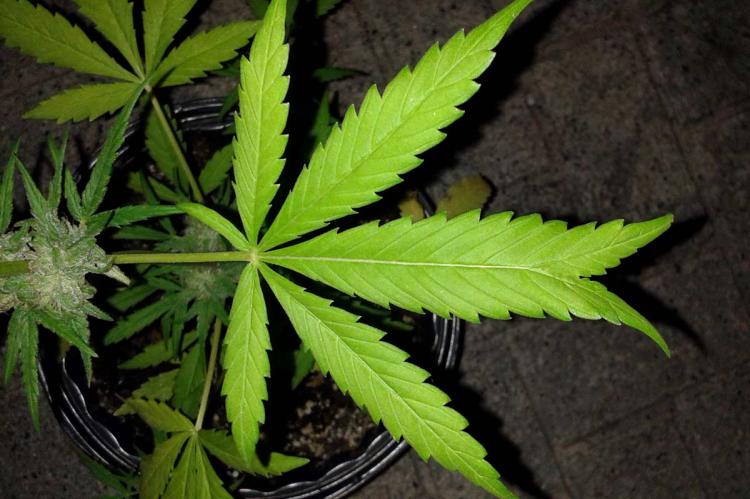Strain Refers to Viruses Not Cannabis
In an era of information, its time to wash our hands of outdated terminology.
America misaligned cannabis for centuries, and the damage to cannabis vocabulary runs deep. Due to these unpleasant roots, cannabis retains unfavorable and ineffective terms. Unfortunately, “strain” is one of the labels which has little relevant scientific value.
WHAT DO PEOPLE MEAN WHEN THEY REFER TO A CANNABIS STRAIN?
“Strain” is not an unscientific term, but it doesn’t apply to the world of botany. Instead, there are strains of species, including viruses, bacteria, and fungi. Typically when referring to a crop, we talk about cultivated varieties. We call cultivated varieties cultivars for short.
The International Code of Nomenclature for Cultivated Plants uses cultivar as the most basic classification category for cultivated plants. A cultivar refers to plants with desirable attributes maintained during propagation. Essentially, any variety of plants which human hands have interacted with are cultivars. This definition is much closer to the experience of supposed cannabis “strains.”
While a strain of a bacteria or virus goes onto mutate and adapt to its host, cannabis is bred for specific purposes. Cannabis does not evolve as much as it propagates itself into the next generation as most plants do. Even in nature, cannabis exists in naturally forming varieties.
As cultivators take different flowers and preserve them for decades, or crossbreed them with other varieties, they transform into what’s available on the market. These flowers weren’t created only through the plant struggling to find the best way to adapt, but through humans handpicking the crops for what they wanted as well. For example, modern cannabis cultivars tend to only become denser and more potent over time.
Using the proper horticultural terms instead of “strain,” a low-level taxonomic name below species, allows for a much healthier discussion of cannabis. Any plant touched by human hands is a cultivated variety. While two farmers might buy the same seeds, they’re growing two different cultivars. This vocabulary allows for a much more precise system of organizing the different kinds of buds we’re now selling in a legal market.
WHERE DID CONFUSING CANNABIS WORDS COME FROM?
Even after cannabis existed for centuries as a medical term, Americans, such as Henry Anslinger, popularized the word “Marijuana.” Anslinger did so to disparage the cannabis smoking minorities who were supposedly creating “satanic jazz music” through the ingestion of cannabis. Starting with California in 1913, negative attitudes towards cannabis predate Anslinger as the state governments were already banning “Marijuana” throughout the country. While Anslinger did not single-handedly create the negative perception of cannabis, he codified a toxic and racist mindset nationally.
During the Great Depression, America needed a scapegoat, and in 1937 Anslinger was going to give it to them. Although earlier, he had said that the idea that cannabis makes users more violent was an “absurd fallacy,” Anslinger passed the Marijuana Tax Act in 1937 outlawing possessing and selling cannabis. Put in power in the wake of prohibition, and during an era where hard drug use wasn’t rampant, Anslinger was able to create a demographic he could police for profit. He achieved this through disinformation and racialized propaganda.
The 1930s weren’t so long ago. Several parts of the American government use the term “marijuana” in their official documents and titles to this day. Anslinger himself would go onto spread sensationalized stories, further spun by the media to purposefully obfuscate America’s understanding of cannabis. It is this atmosphere we inherited.
For cannabis to reach its potential, accuracy is vital. Strain, indica, sativa, marijuana, hybrids, none of these terms drive to the key issues of classifying cannabis. There is no way to research something which we cannot define, and so if we are seriously pushing for cannabis acceptance, then we must be careful and correct in the terms we use to talk about the herb.
WHY IS IT IMPORTANT TO USE MORE ACCURATE TERMS?
When discussing medicine, accuracy is necessary. There cannot be a debate on the appropriate measurements or classifications of a substance used for treatment. If cannabis is to achieve federal legalization and pharmacological acceptance, then we must use the correct terms.
The word cultivar was not created for cannabis; instead, it’s in common usage throughout the world of botany. Relying on such standards brings cannabis out of the dark and into the daytime dealings of the world. Archaic terms such as sativa, indica, or strain need to be shed for the sake of further clarity.
While some believe you can grow the same strain from different seeds, cultivars differentiate between the plants grown from the same seeds. No matter the starting point, a Washington grower and an Arizona grower will be cultivating two separate cultivars. While they may share an origin, the differences in environment and care make for two observably different varieties of cannabis.
Being able to identify these varieties improves medicinal and even recreational efficacy. Rather than grouping in large swarths of plants into strains, examining cultivars allows us a closer look at the unique compounds and features of cannabis varieties.
Currently, the government continues to call cannabis “Marijuana.” While a racist legacy makes it challenging to portray cannabis accurately, using proper vocabulary and referencing medical studies will pave the way for a better future. Cultivar is one of those terms which should help redefine the cannabis industry.
- Log in to post comments

